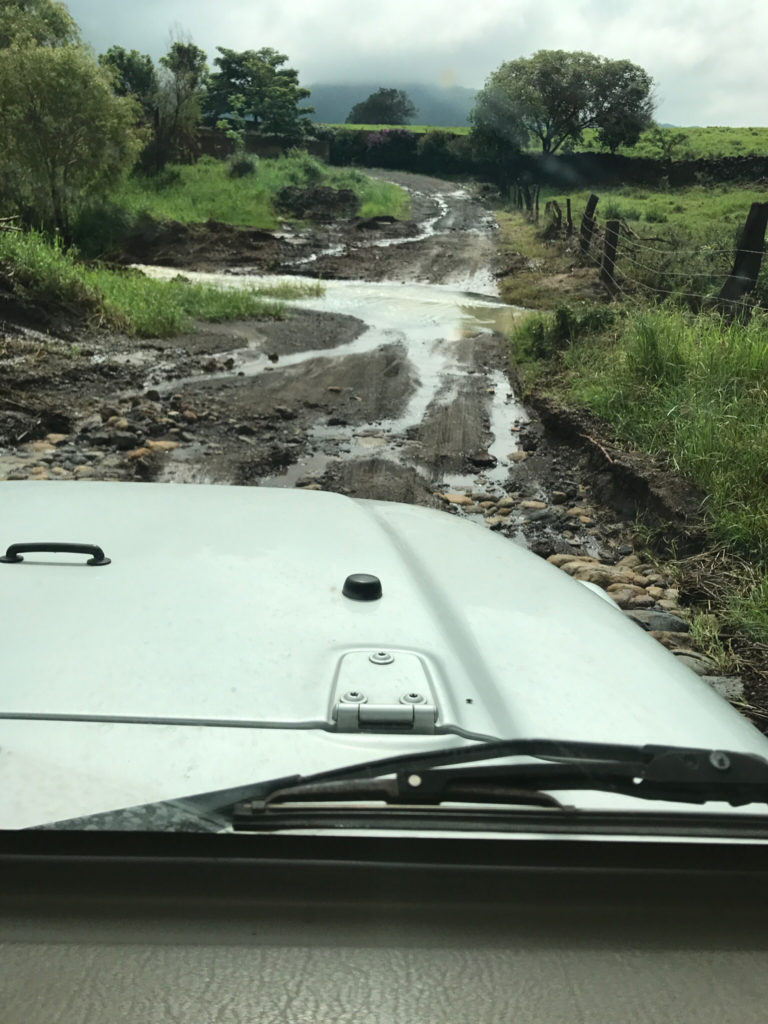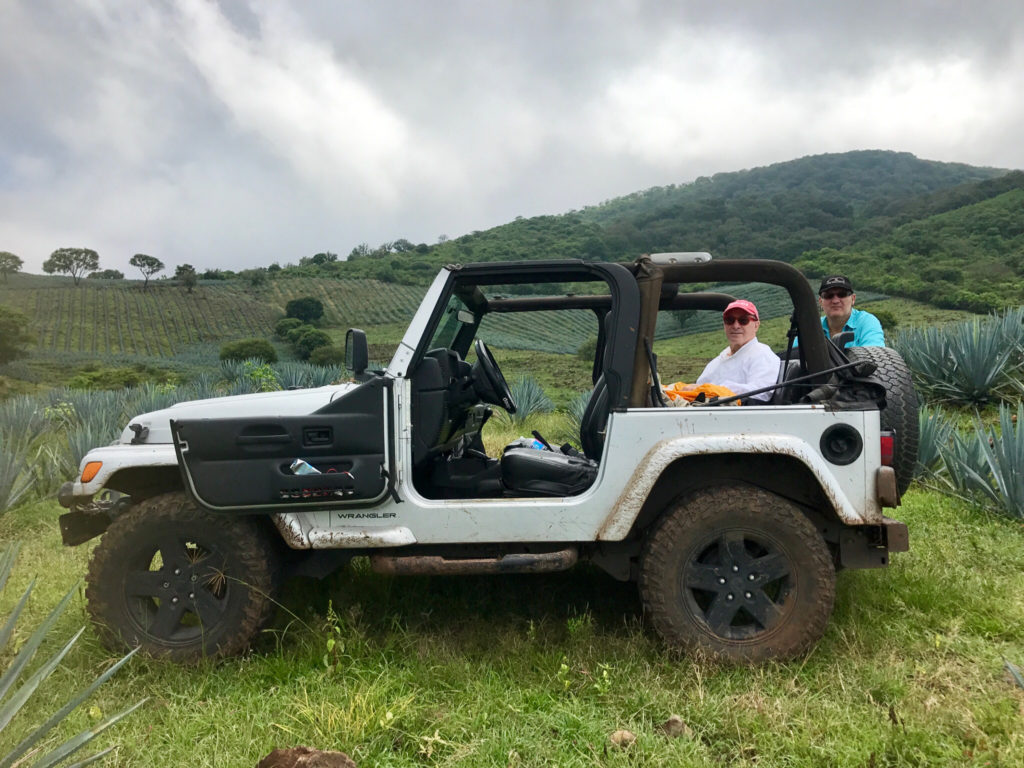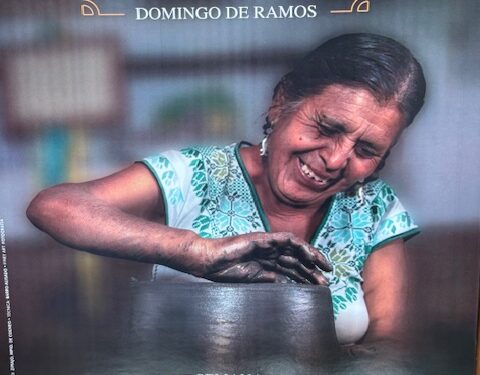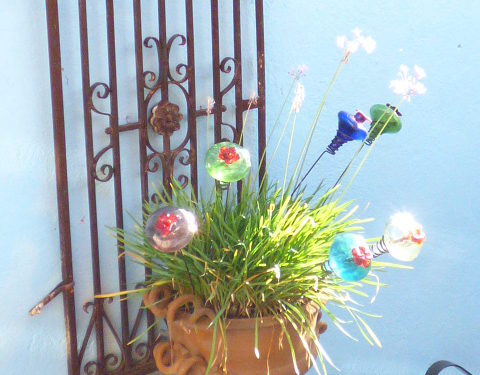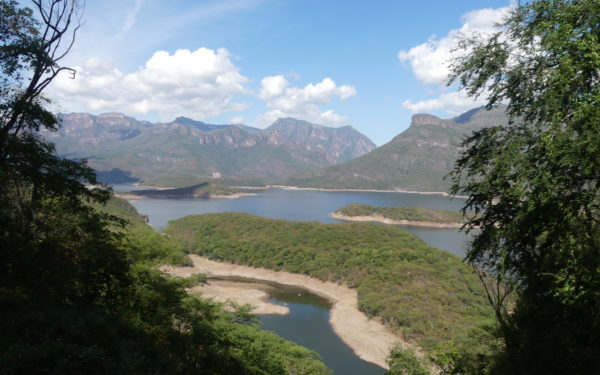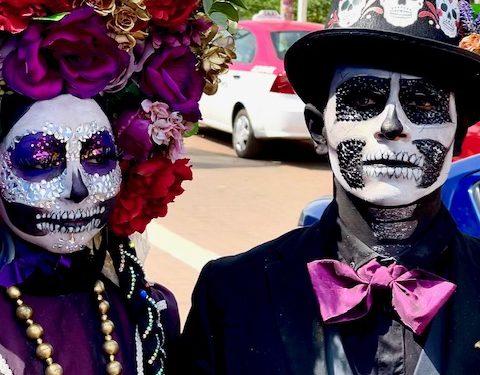Guadalajara – September 2nd, 2017
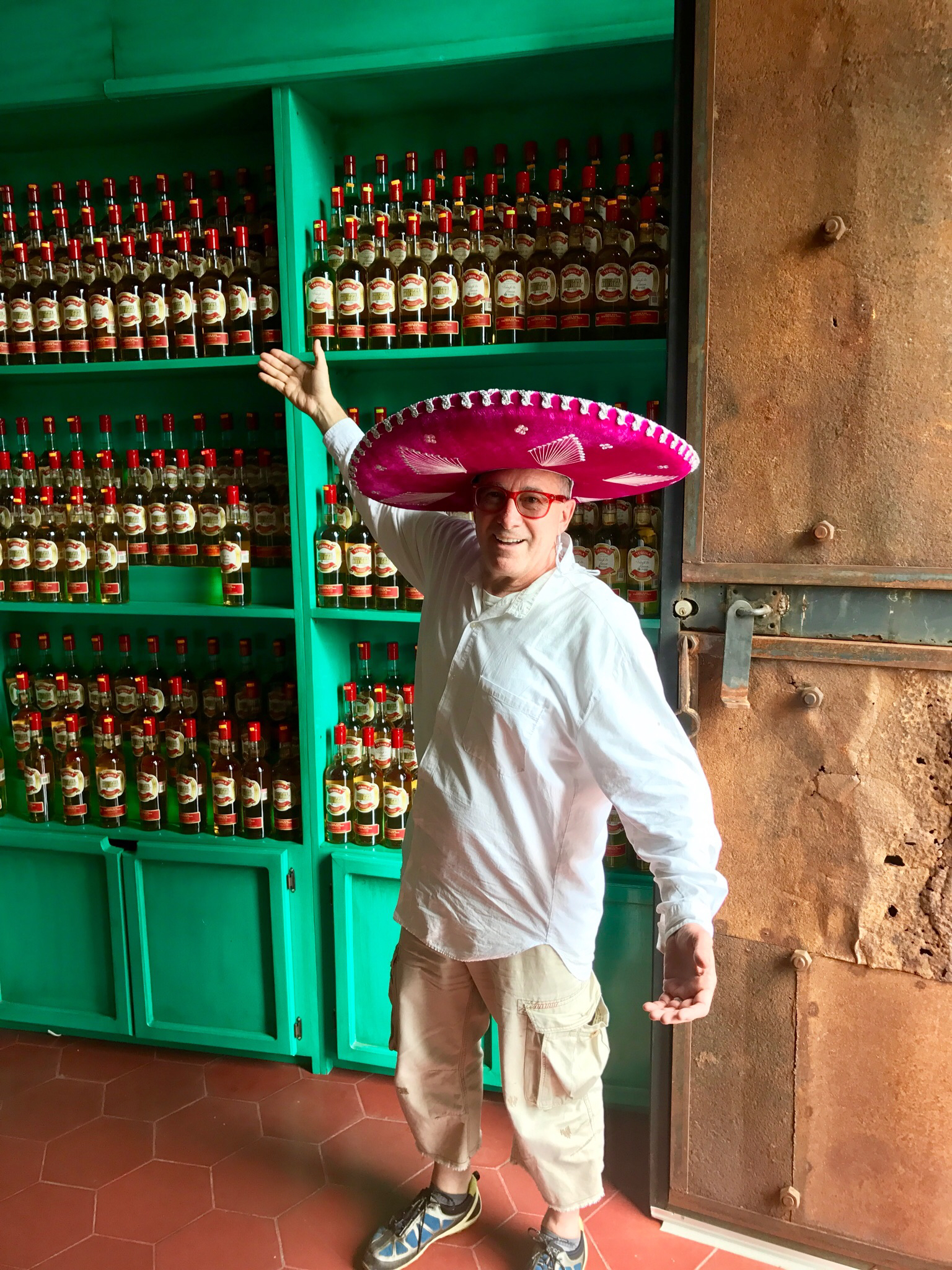
Today more than you want to know about Tequila and were afraid to ask is not a simple spirit but complex and subtle.
Tequila (Spanish pronunciation: [teˈkila]) is a regionally specific distilled beverage made from the blue agave plant, primarily in the area surrounding the city of Tequila, 65 km (40 mi) northwest of Guadalajara, and in the highlands (Los Altos) of the central-western Mexican state of Jalisco. Aside from differences in the region of origin, tequila is a type of mezcal (and the regions of production of the two drinks are overlapping). The distinction in the method of production is that tequila must use only blue agave plants rather than any type of agave. Tequila is commonly served neat in Mexico and as a shot with salt and lime across the rest of the world.
We have being doing it wrong the salt and lime is a cover up for bad Tequila.
Ready for our tequila education we were picked up by our guide Giancarlo on his Jeep, little did we know what was in store for the day.
We drove out of the city into a beautiful farmland valley surrounded by inactive volcanos when suddenly it changed to rows and rows of perfectly lined Agave. Suddenly Giancarlo turns off the main highway into a red dirt road and for the next 45 minutes, we drove through a path cut into the landscape, crossing creeks, holding on for dear life as the jeep bounced and twisted and stop just quickly enough for Giancarlo to open gates roughly made of bar wire and sticks………but what a payoff.
At the end of the road, we got off walked across the agave field and the whole valley was out our feet amazing views worth the bouncy ride.
For the next 30 minutes, Giancarlo proceeded to explain to us the process of growing ad harvesting Agave Azul Taquelina Weber.
The red volcanic soil in the region around the city of Tequila is particularly well suited to the growing of the blue agave, and more than 300 million of the plants are harvested there each year. Agave grows differently depending on the region. Blue agaves grown in the highlands are larger in size and sweeter in aroma and taste. Agaves harvested in the lowlands, on the other hand, have a more herbaceous fragrance and flavor.
A jimador is a worker who harvests the agaves and cuts off the sharp leaves Planting, tending, and harvesting the agave plant remains a manual effort, largely unchanged by modern farm machinery and relying on centuries-old know-how. The men who harvest it, the jimador [ximaˈðoɾes], have intimate knowledge of how the plants should be cultivated, passed down from generation to generation.
By regularly trimming any quiotes [ˈkjotes] (a several-meter high stalk that grows from the center of the plant), the jimador prevents the agave from flowering and dying early, allowing it to fully ripen. The jimador must be able to tell when each plant is ready to be harvested and using a special knife called a coa (with a circular blade on a long pole), carefully cut away the leaves from the piña (the succulent core of the plant). If harvested too late or too early, the piñas, which can average around 70 kg (150 lb) in the lowlands to 110 kg (240 lb) in the highlands, will not have the right amount of carbohydrates for fermentation.
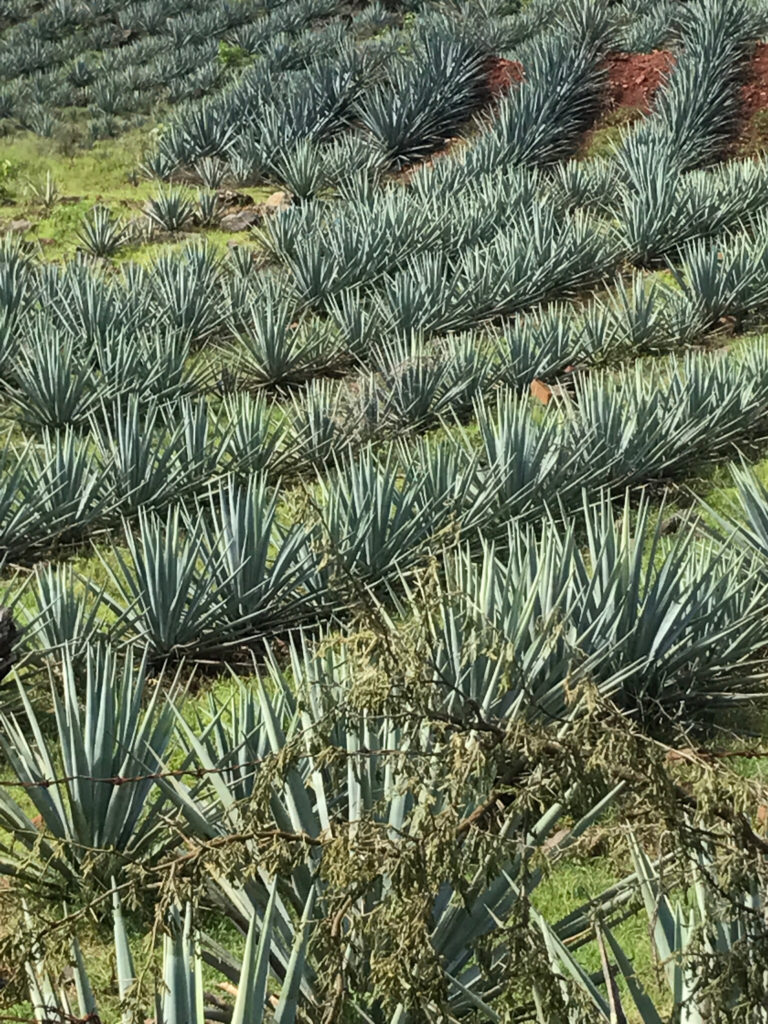
Back on our jerk reversing trajectory to the main highway.
Mexican laws state that tequila can only be produced in the state of Jalisco and limited municipalities in the states of Guanajuato, Michoacán, Nayarit, and Tamaulipas. Tequila is recognized as a Mexican designation of origin product in more than 40 countries.
Tequila is most often made at a 38% alcohol content (76 U.S. proof) for domestic consumption but can be produced between 31 and 55% alcohol content (62 and 110 U.S. proof). Per U.S law, tequila must contain at least 40% alcohol (80 U.S. proof) to be sold in the United States.
Tequila was first produced in the 16th century near the location of the city of Tequila, which was not officially established until 1666. A fermented beverage from the agave plant known as pulque was consumed in pre-Columbian central Mexico before European contact. When the Spanish conquistadors ran out of their own brandy, they began to distill agave to produce one of North America’s first indigenous distilled spirits.
Some 80 years later, around 1600, Don Pedro Sánchez de Tagle, the Marquis of Altamira, began mass-producing tequila at the first factory in the territory of modern-day Jalisco. By 1608, the colonial governor of Nueva Galicia had begun to tax his products. Spain’s King Carlos IV granted the Cuervo family the first license to commercially make tequila.
Some tequilas have remained as family-owned brands, most well-known tequila brands are owned by large multinational corporations. However, over 100 distilleries makeover 900 brands of tequila in Mexico and over 2,000 brand names have been registered. Due to this, each bottle of tequila contains a serial number (NOM) depicting in which distillery the tequila was produced. Because only so many distilleries are used, multiple brands of tequila come from the same location.
Our first tasting and stop at Tres Mujeres a family own distillery, our first stops the brick ovens that are still in use today, the mashing machinery, and the fermentation vats, but hey where is the tasting?
After harvesting, the piñas [ˈpiɲas] are transported to ovens where they are slowly baked to break down their complex fructans into simple fructoses. Then, the baked piñas are either shredded or mashed under a large stone wheel called a tahona [taˈona]. The pulp fiber, or bagazo [baˈɣaso], left behind is often reused as compost or animal feed, but can even be burnt as fuel or processed into paper. Some producers like to add a small amount of bagazo back into their fermentation tanks for a stronger agave flavor in the final product.
The extracted agave juice is then poured into either large wooden or stainless steel vats for several days to ferment, resulting in a wort, or mosto [ˈmosto], with low alcohol content. This wort is then distilled once to produce what is called “ordinario [oɾðiˈnaɾjo], and then a second time to produce clear “silver” tequila. Using at least two distillations is required by law. A few producers have experimented with distilling the product a third time, but this has not caught on as a trend, and some have said it removes too much of the agave flavor from the tequila From there, the tequila is either bottled as silver tequila, or it is pumped into wooden barrels to age, where it develops a mellower flavor and amber color.
We left the main building towards the cava(caves)where the good tequila is aged in French or American oak barrels after a walk down the long corridors we came across a little cozy corner set up with Mexican leather furniture and rows of Tequila bottles……….let the tasting begin.
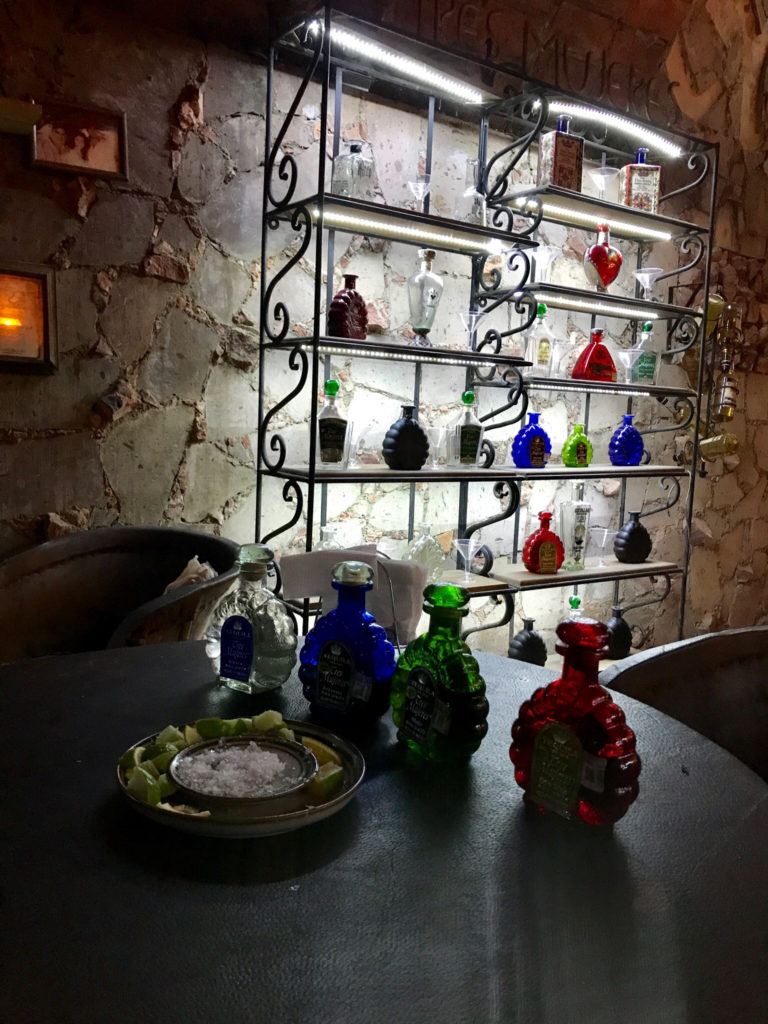
Giancarlo’s proceeded to take a bottle of orange juice, cinnamon and dark chocolate out of his satchel.
Blanco [ˈblaŋko] (“white”) or Plata [ˈplata] (“silver”): white spirit, unaged and bottled or stored immediately after distillation, or aged less than two months in stainless steel or neutral oak barrels.
A sip of orange juice to cleanse the palette, then a shot of tequila letting swish in your mouth for 6 seconds then swallowing, the burn was felt all the way down to my little toe….then exhaling and inhaling to capture its full aroma.
Reposado [repoˈsaðo] (“rested”): aged a minimum of two months, but less than a year in oak barrels of any size.
We followed the same tasting procedure with a few variations this time, the orange juice sprinkled with cinnamon. The burn was less intense than before.
Añejo [aˈɲexo] (“aged” or “vintage”): aged a minimum of one year, but less than three years in small oak barrels.
Dark chocolate was eating prior to sipping, no burn just glowing warmth.
Extra Añejo (“extra aged” or “ultra aged”): aged a minimum of three years in oak barrels, this category was established in March 2006.
Dark chocolate again but this time your throats felt like it was cuddled in warm blankets. It tasted like more……so another glass followed.
With 100% agave tequila, Blanco or Plata is harsher with the bold flavors of the distilled agave up front, while reposado and añejo are smoother, subtler, and more complex. As with other spirits aged in casks, tequila takes on the flavors of the wood, while the harshness of the alcohol mellows. The major flavor distinction with 100% agave tequila is the base ingredient, which is more vegetal than grain spirits (and often more complex).
A visit to the gift shop for a few bottle memories to bring home’
Next on the agenda was lunch and a visit to the town of Tequila, which our guide called Disneyland, and it looked like the Mexican Pavilion at Disney world……everything brightly painted, clean, and in perfect order.
Lunch was in a small Mercado, David had fajitas and cleaned his plates, my cheese enchiladas covered in green and red chile sauces were delectable.
Around the plaza and within a few blocks you can find more tasting rooms, Sauza, Cuervo, Herradura, and a few others, we stopped at Orrenidin for another tasting but really was already tequila out…….a sip and we were on our way back to Guadalajara.
It was a great day spent with a great knowledgeable guide a young traveled college student who patiently allowed David to practice his Spanish.
